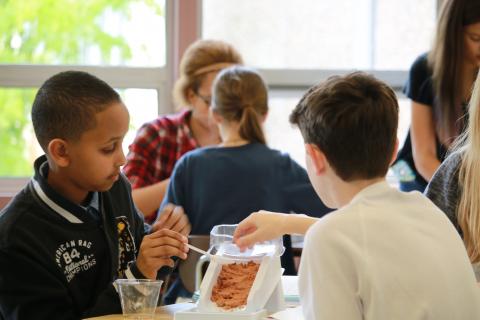Streams of Data: Nurturing Data Literacy in Elementary Earth Science
How do we help students transition from simple data sets that students collect themselves to work with professionally-collected data? Streams of Data will develop and test an approach to support 4th grade students in this transition. We will create student activities that use existing geoscience data resources, which connect to observable, familiar aspects of the natural world, have personal relevance, and align with Earth science curriculum standards.
The transition from a student understanding his/her own data to understanding someone else’s data is an important one. This National Science Foundation-funded project seeks to understand how professionally collected, scientific data can be used to support elementary students to develop data literacy skills that they will need in high school and beyond! An interdisciplinary team of educators, researchers, and scientists from EDC's Oceans of Data Institute and the American Geosciences Institute (AGI) will conduct baseline research to understand students' natural affinities for making meaning about complex data and phenomena; develop and test scaffolding activities that minimize barriers to analytical thinking with professionally collected data; and assemble promising approaches into a multi-activity experience to examine the degree to which the combination of activities allows students to do productive work with professionally collected data.
Streams of Data has created fourth-grade lesson plans for a five-day sequence about rivers and flooding. In addition to the lesson plans, find links to data sources, information about creating data representations such as the hydrographs, the set up and use of stream tables, and more. View Materials.
This project is funded by the National Science Foundation, grant # 1906264. Any opinions, findings, and conclusions or recommendations expressed in these materials are those of the author(s) and do not necessarily reflect the views of the National Science Foundation.

